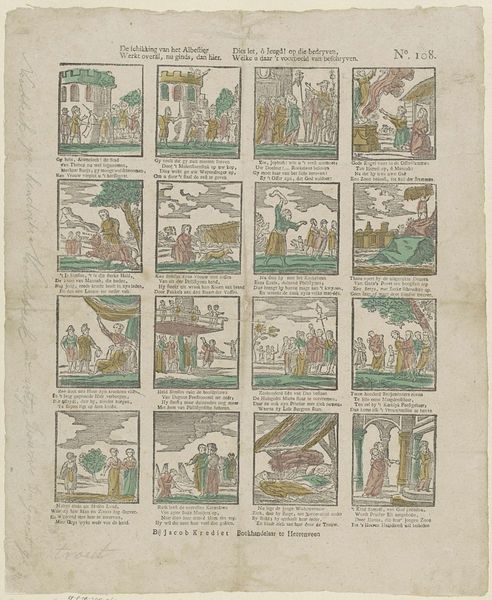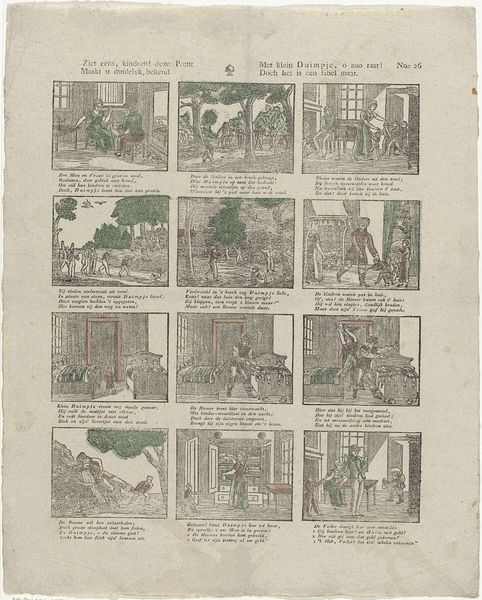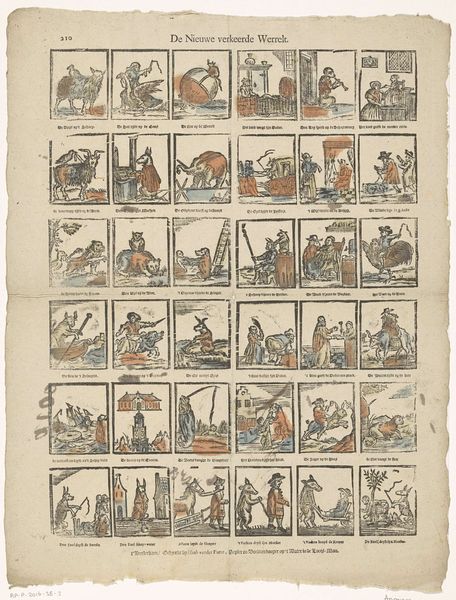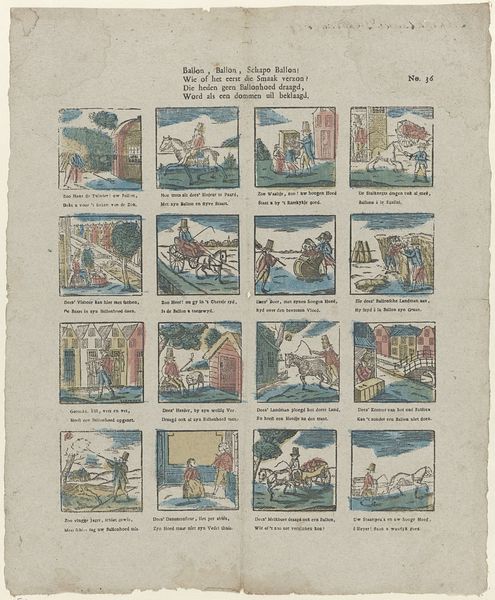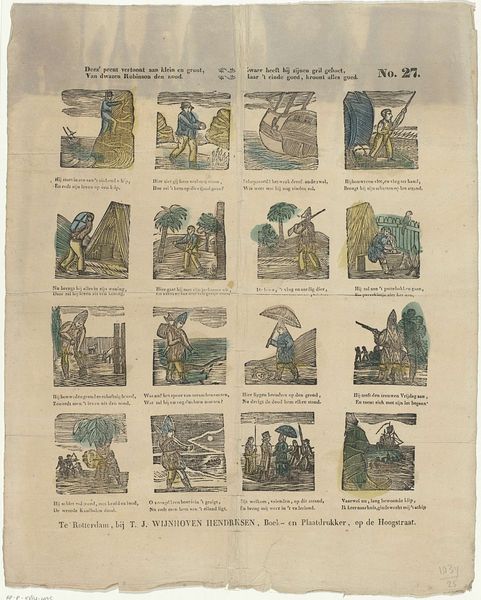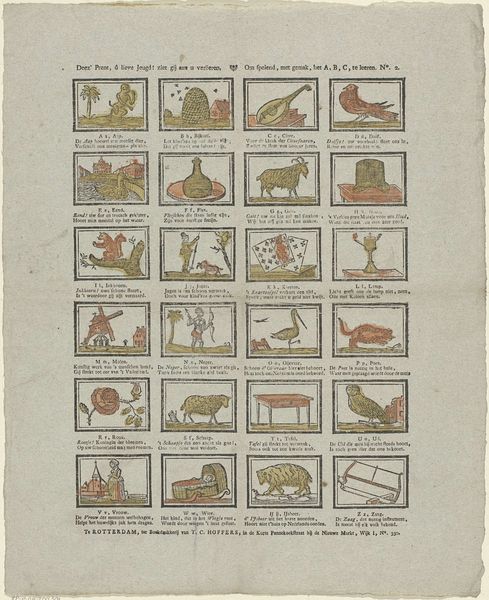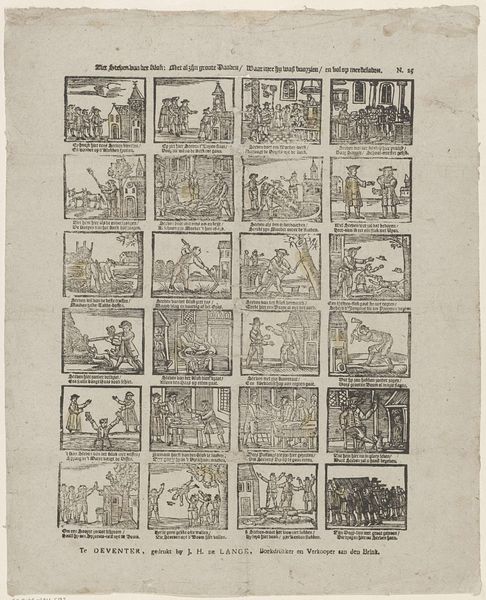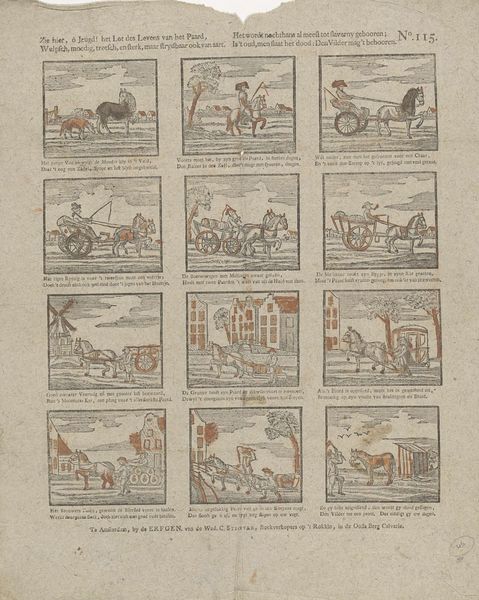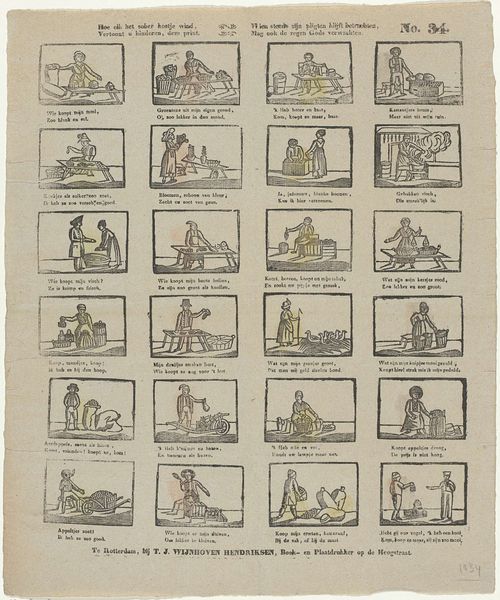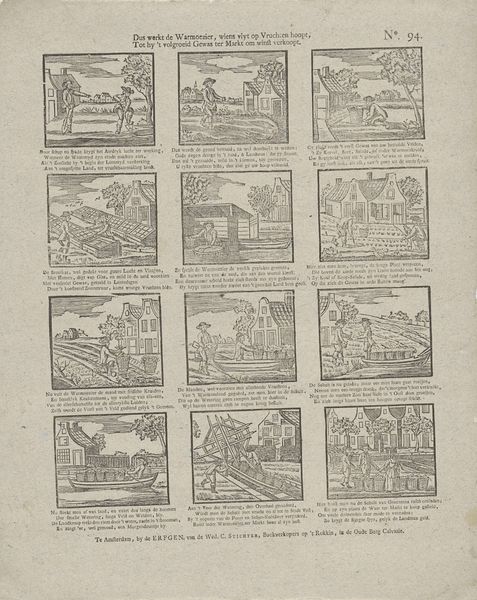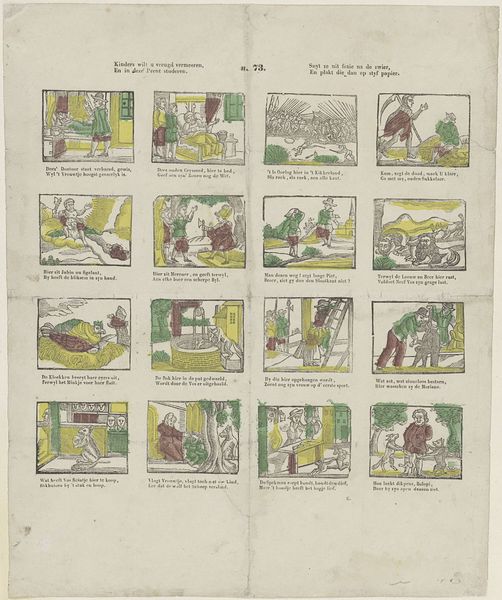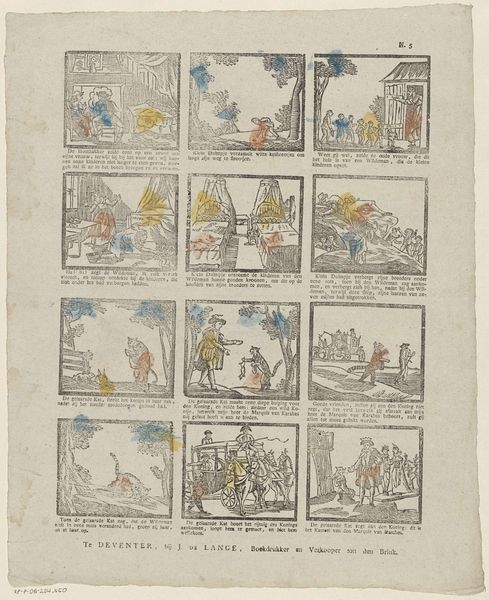
graphic-art, print, engraving
#
graphic-art
#
aged paper
#
toned paper
#
quirky sketch
#
narrative-art
# print
#
old engraving style
#
sketch book
#
personal sketchbook
#
sketchwork
#
folk-art
#
sketchbook drawing
#
storyboard and sketchbook work
#
sketchbook art
#
engraving
Dimensions: height 406 mm, width 340 mm
Copyright: Rijks Museum: Open Domain
Curator: Welcome. Today we’re examining "De nieuwe verkeerde wereld," or “The New Wrong World,” an engraving dating from 1830 to 1892, from the Rijksmuseum's collection, attributed to Jacob Plügger. Editor: Immediately, I’m struck by the organization – it's like a bizarre comic strip, and the aged paper lends it a quaint, almost folky charm. It evokes the tactile history of printmaking. Curator: Indeed. Each frame presents a topsy-turvy scene—a world turned upside down, satirizing social norms. We see visual puns, absurd scenarios presented in miniature vignettes. The composition, a grid of tiny narratives, is key to understanding its critique. Editor: Precisely. But consider the material constraints: the artist worked within the limits of the engraving technique, employing cross-hatching and simple lines to convey complex narratives. I'm wondering what kind of labour was necessary to generate the number of these to put them in circulation. Curator: The lines’ simplicity belies the cleverness. Note how Plügger uses graphic symbols – visual codes of the period – to invert expectations and poke fun at authority. Look closely at how figures are rendered; their postures and gestures accentuate the absurd. Editor: Yes, and the tonal variations achieved on this aged paper suggest the use of multiple printing plates, requiring skilled labour in the inking and layering processes. It speaks of collaboration, not just artistic genius. I bet the artist didn't just make the images he printed himself, right? Curator: Possibly. What interests me, in semiotic terms, is the juxtaposition of mundane details with impossible events. It disrupts the viewer’s cognitive schema, forcing a re-evaluation of meaning itself. Editor: It’s fascinating how the chosen printing methods facilitated the widespread dissemination of such unconventional narratives. Were these engravings for common folk, do you know? That would have influenced their immediate cultural understanding and use. Curator: Quite. Considering the print's accessibility as a medium, it undoubtedly influenced how satirical concepts were absorbed. The compact design facilitates storytelling and promotes easy dissemination. Editor: I see these not just as visual arguments, but objects infused with social history, reflecting a unique confluence of artistic vision, printing technology, and society. It feels important to really look into the specific type of press and the inks involved here. Curator: An excellent point, emphasizing the contextual depth enriching the artistic reading. Editor: Indeed. Reflecting upon Plügger's “New Wrong World” brings focus to art’s ability to both record the history of a craft and dissect established constructs.
Comments
No comments
Be the first to comment and join the conversation on the ultimate creative platform.
